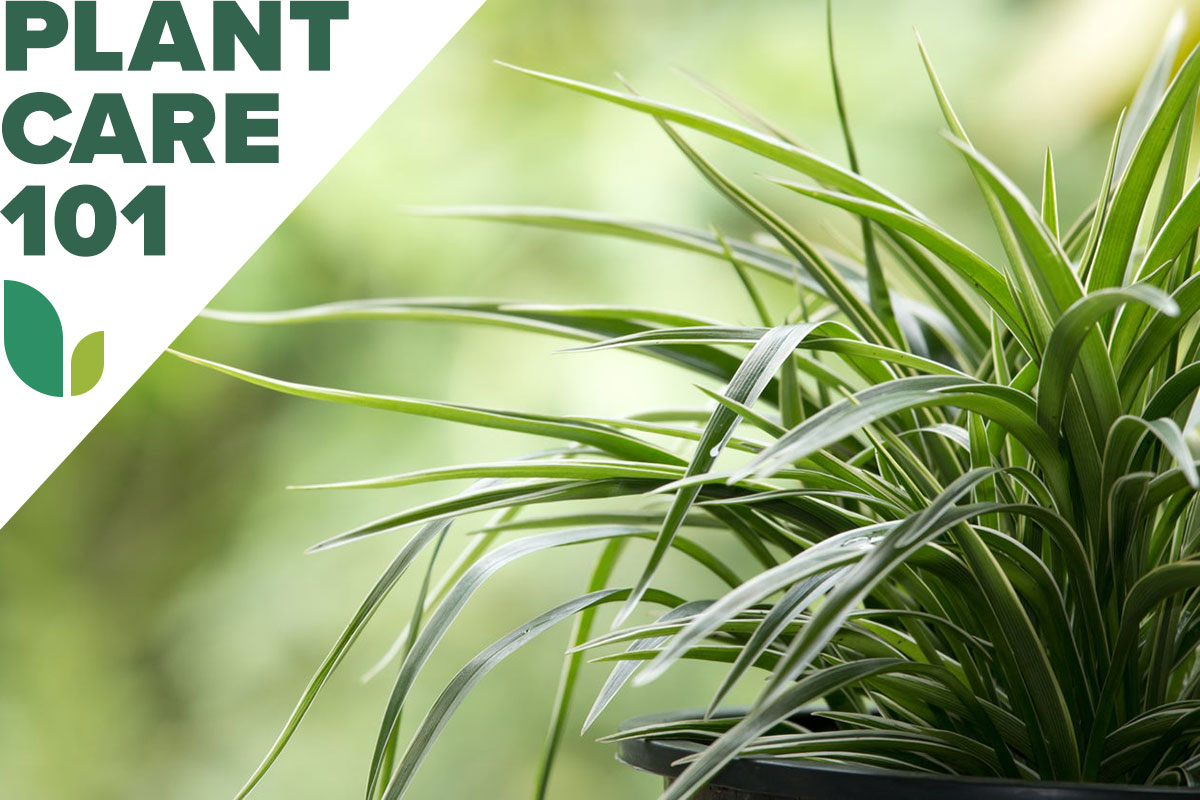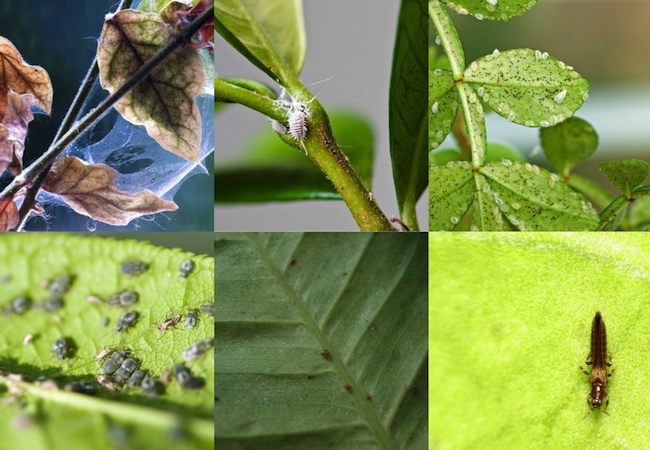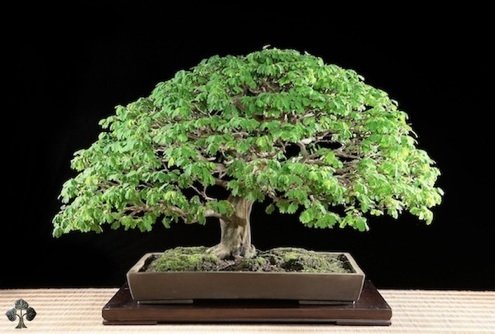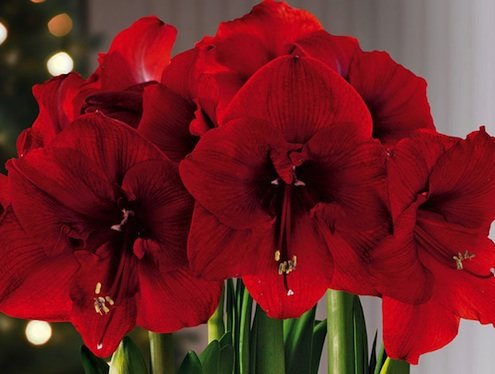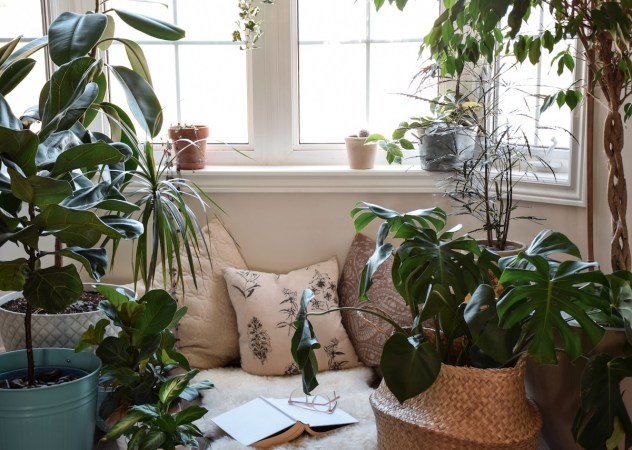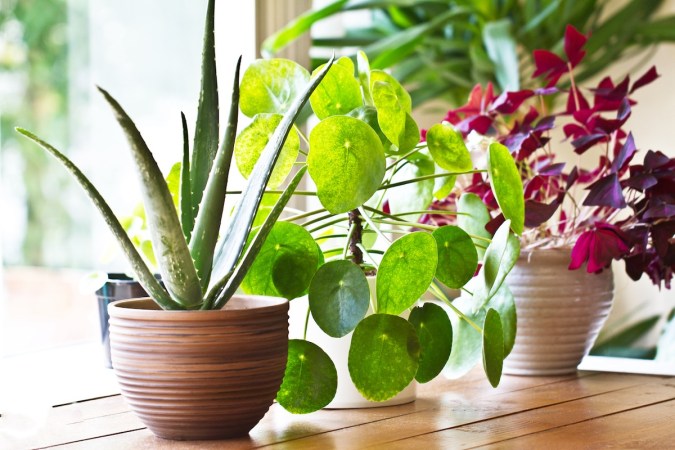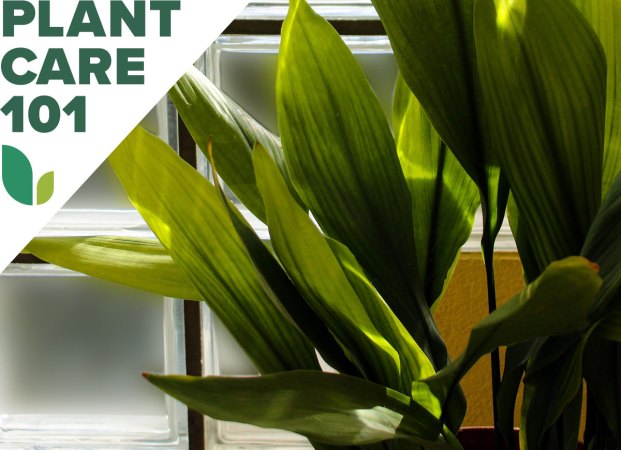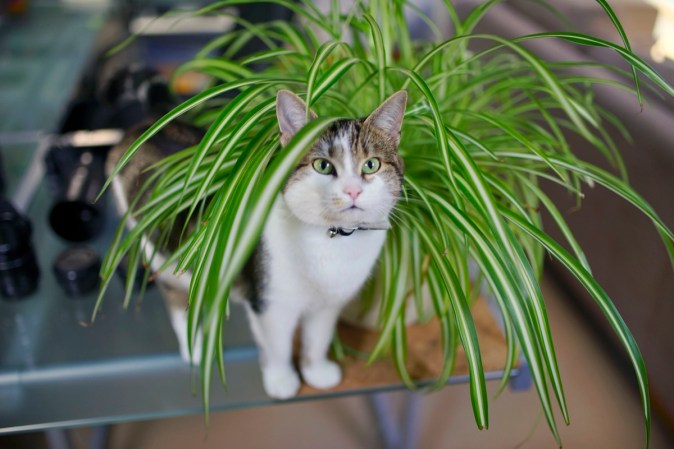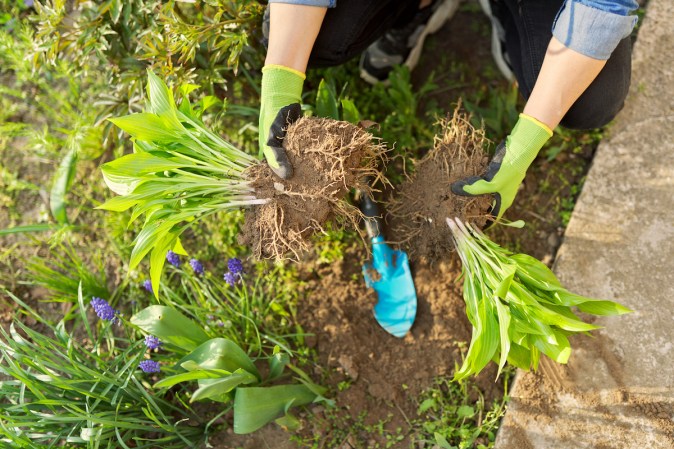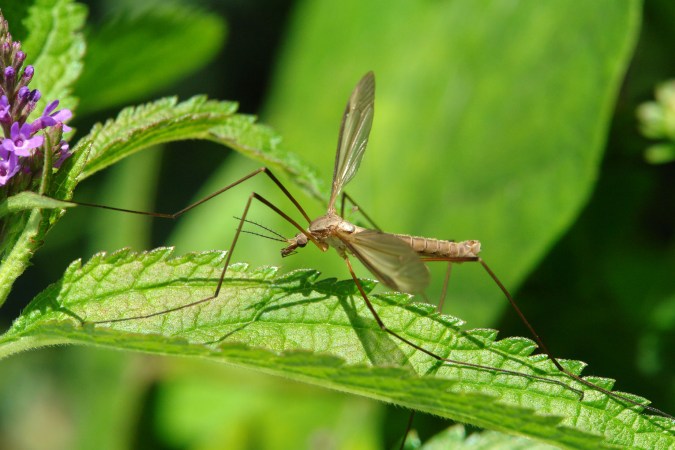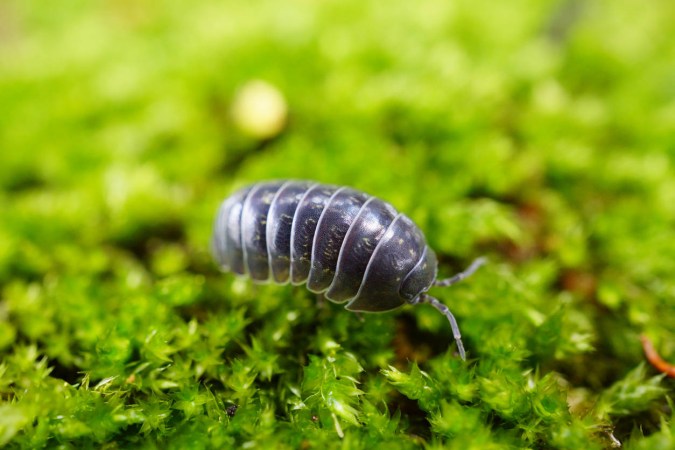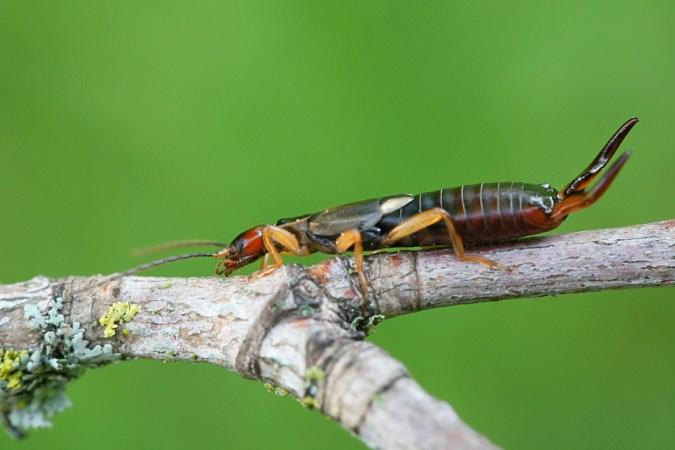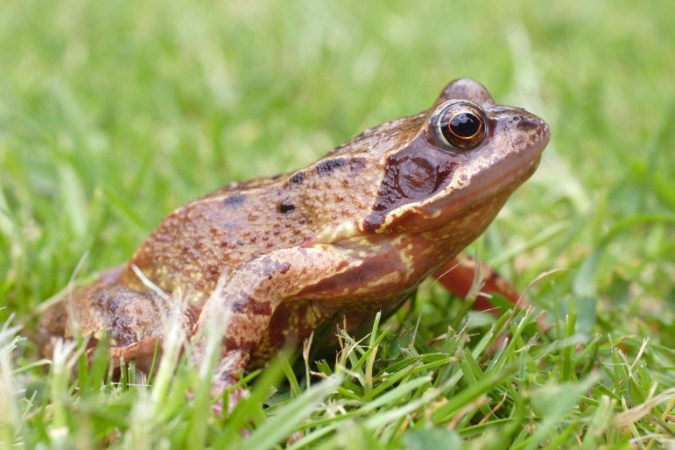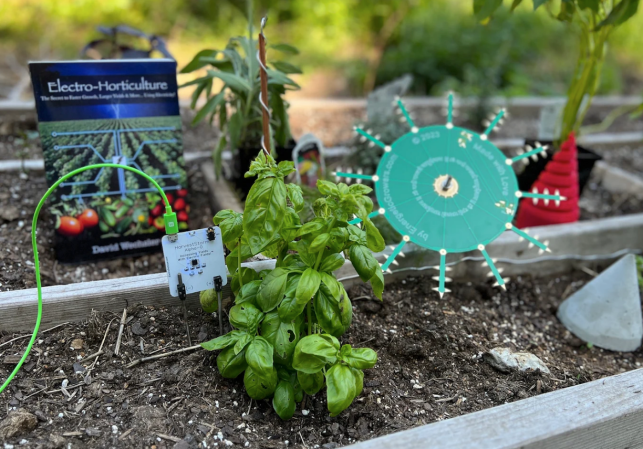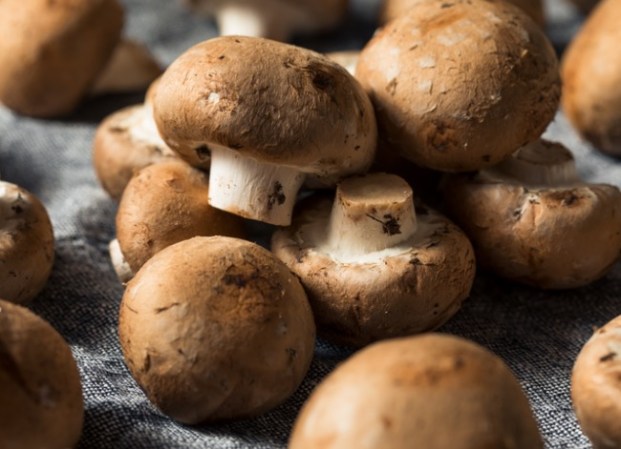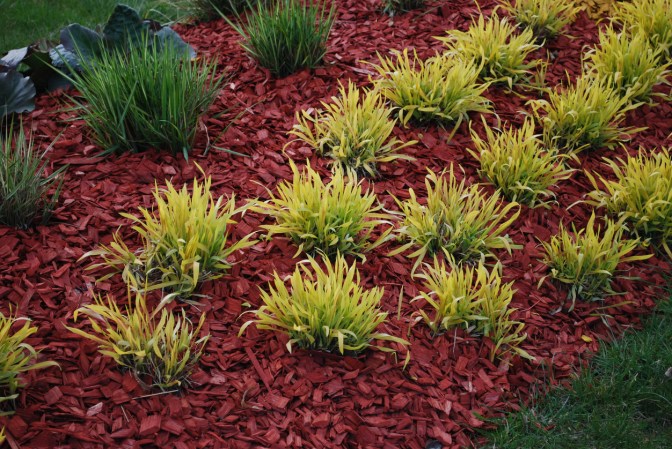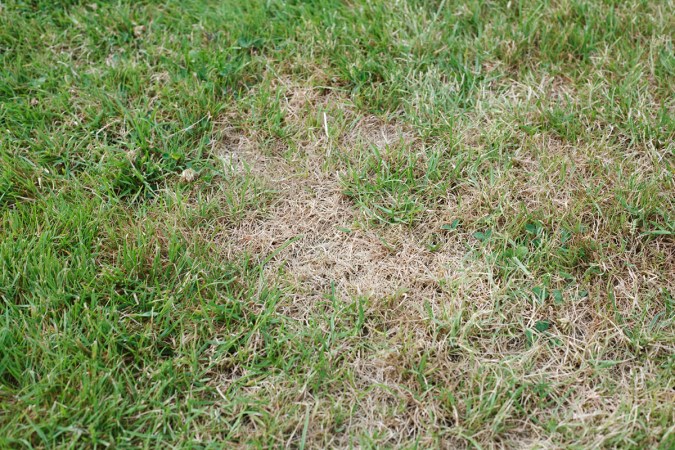We may earn revenue from the products available on this page and participate in affiliate programs. Learn More ›
Called “spider plant” and “spider ivy” for the plantlets that dangle from its stems like spiders from stands of silk, Chlorophytum comosum is also known as an airplane plant. Native to South Africa and popular since the Victorian era, it is hardy in zones 9 through 11. However, it’s most often enjoyed as a low-maintenance indoor houseplant—spider plant care is no threat to anyone with a not-so-green thumb.
Spider Plant Care at a Glance
Common Name: Spider plant, airplane plant
Scientific Name: Chlorophytum comosum
Soil: Standard potting soil
Light: Bright, indirect
Water: Medium
Food: Balanced houseplant fertilizer
Temperature and Humidity: Average household temperature
Propagation: Rooting of plantlets
Safety: Nontoxic, but a potential choking hazard
Spider Plant Characteristics
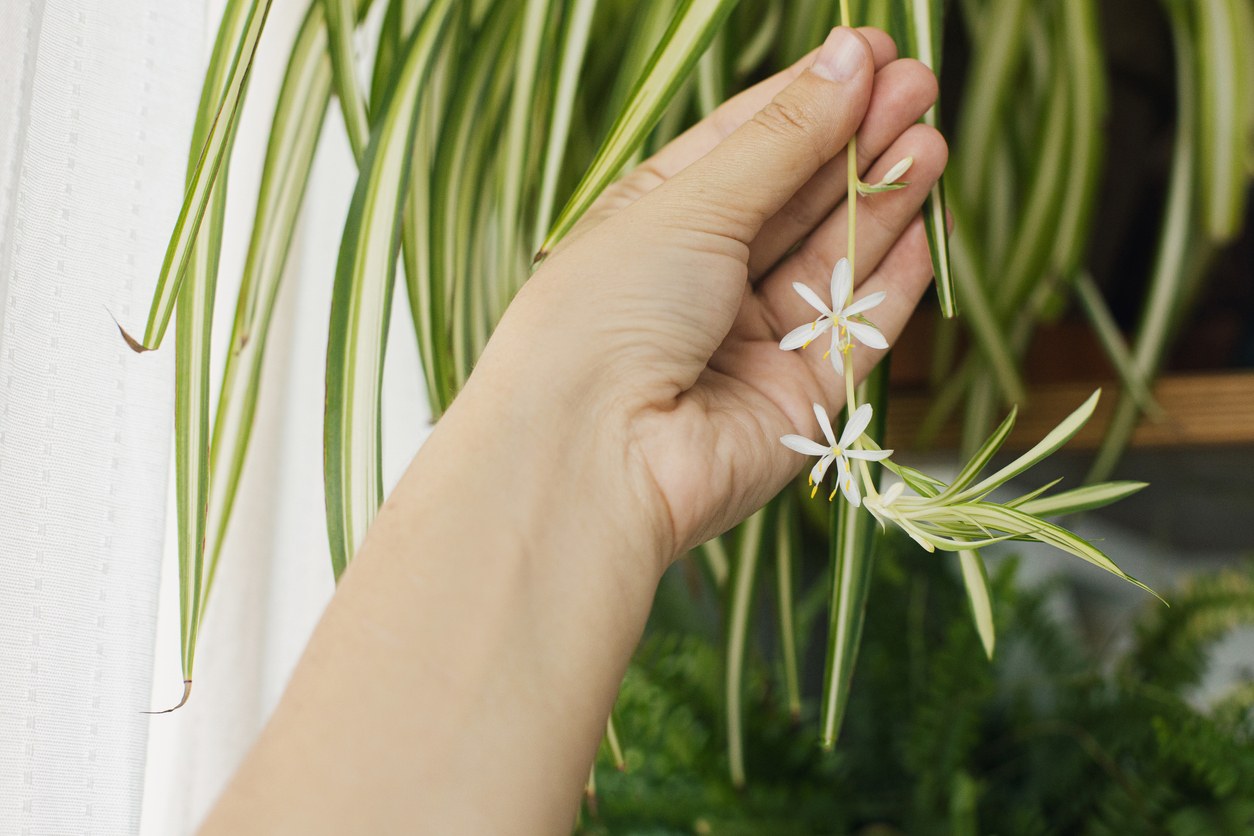
Like a fountain, spider plants’ rosettes of thin, creased, and usually variegated foliage rise from the center of the pot and cascade down on all sides. The largest cultivars can grow up to 2 feet tall and wide. However, leaf length varies from 6 inches in dwarf types, such as Mandaianum, to 16 inches in full-size varieties, such as Variegatum.
When mature, these houseplants produce upright stems with racemes of ½-inch white spider plant flowers that have a star shape. The stems eventually bend to dangle the plantlets.
Select Soil for Spider Plants
A standard potting mix with a pH of 6.0 to 6.5 should work fine for the spider plant. Some homeowners hang spider plant in baskets suspended from hooks, so it can dangle without rooting itself in nearby pots. But it also sits pretty in a more typical pot on a table or pedestal. However you house it, ensure there’s a drip pan underneath the pot to collect any excess water.
RELATED: 14 Houseplants That Grow in Water, So You Can Ditch the Dirt
Choose the Right Light
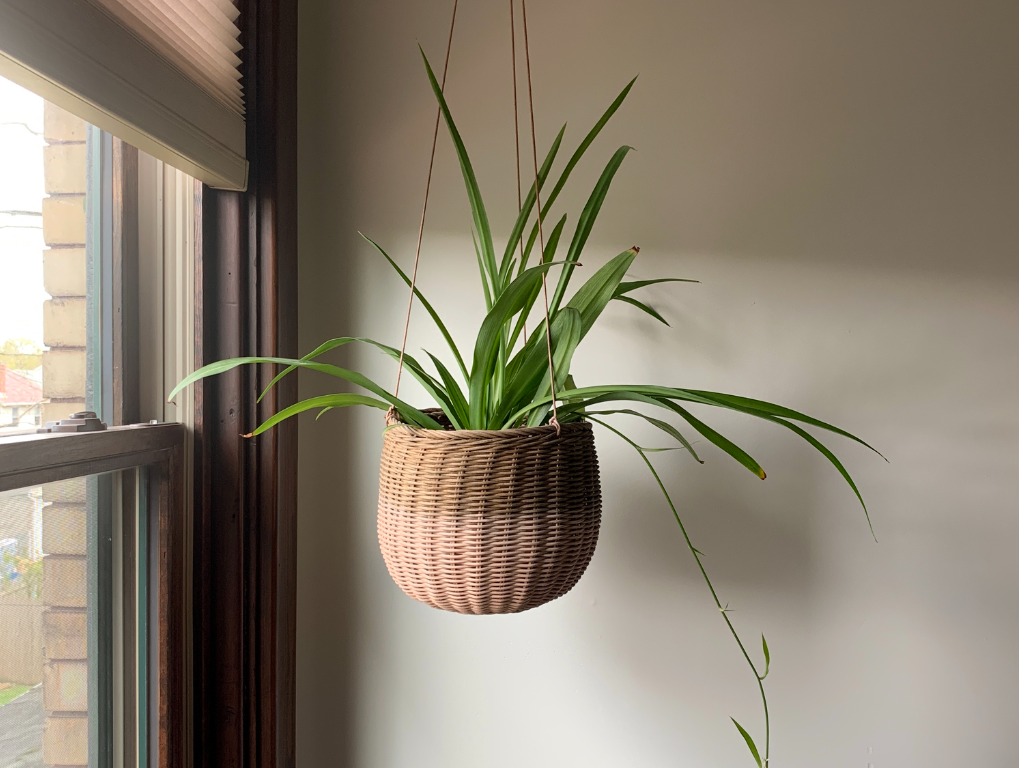
Because variegated spider plant types can burn if they receive too much midday or afternoon sun, it’s a good idea to situate them where they receive only mild-morning sun or bright, indirect light, like an east-facing window. If you need to position yours near a south- or west-facing window, insert a sheer curtain between the plant and the glass to diffuse the light.
If your spider plant lives outside, make sure its container or bed has at least some shade, rather than full sun. However, keep in mind that providing spider plant light might lead to drooping rather than arching leaves.
Water Your Spider Plant
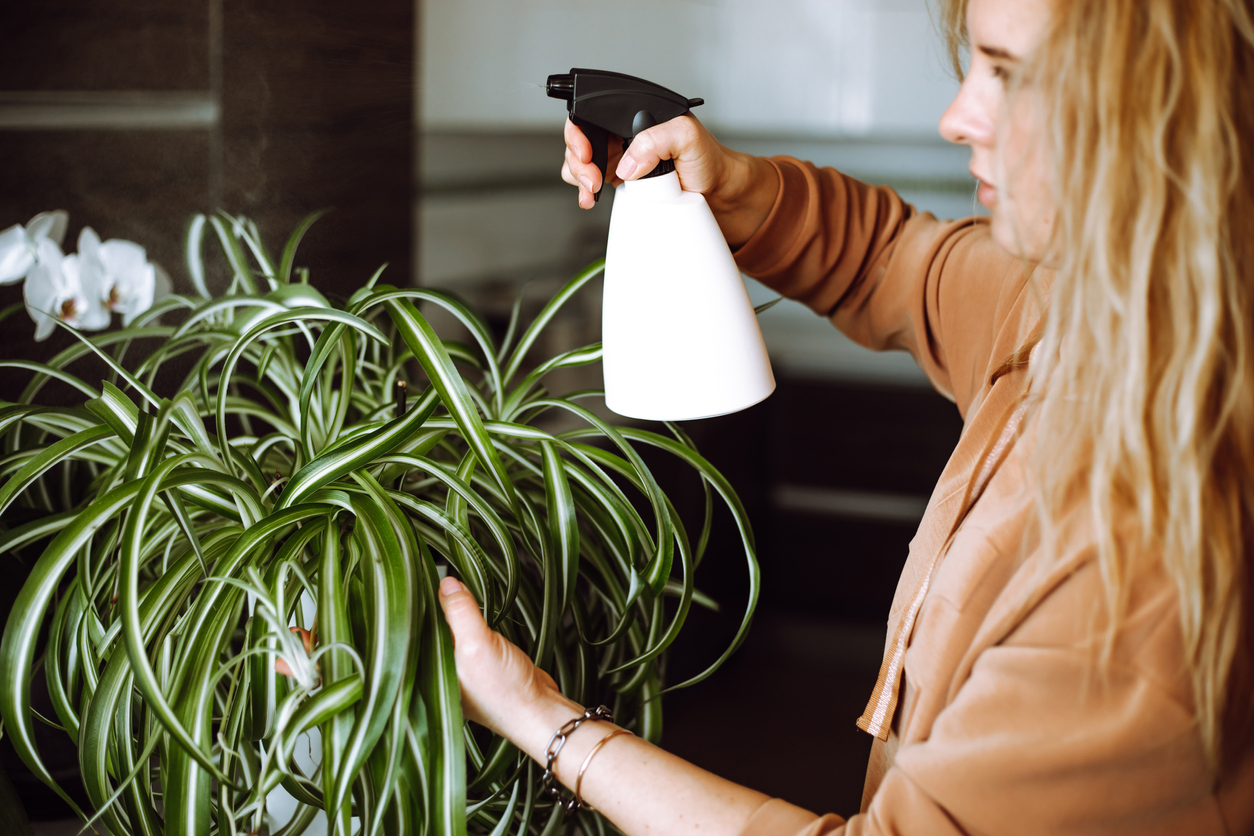
Knowing how to care for spider plants includes modifying how much you water it throughout the year. Apply the following watering tips during each season to prevent root rot.
- Spring and summer: Keep your spider plant’s soil lightly moist at all times, but not soggy.
- Fall: Begin to gradually cut back on water, allowing the soil to dry a bit between waterings.
- Winter: Allow the soil to dry out to 1 inch below the surface before watering.
Spider plant foliage grows from pudgy roots and rhizomes that store moisture and nutrients to preserve its life, which means that forgetting to water your spider plant every now and again isn’t likely to affect its health. But too much drying out will stress spider plants, so don’t let them remain dry for too long.
This plant is also sensitive to fluoride, which can cause spider plant brown tips on its foliage. If your tap water contains that element, consider watering spider plant with rainwater or spring water instead.
RELATED: 6 Indoor Plants That Don’t Need Drainage
Fertilize Your Spider Plant
Spider plants grow the fastest in spring and summer, so it’s a good idea to feed them every 2 weeks during these seasons. Use a balanced houseplant fertilizer, but cut the recommended amount in half.
In autumn, reduce feeding to once a month, and don’t feed the plant at all during winter. If you need to repot your plant, do so in spring, but avoid fertilizing it for several months afterward until it’s well established again.
Set the Temperature and Humidity
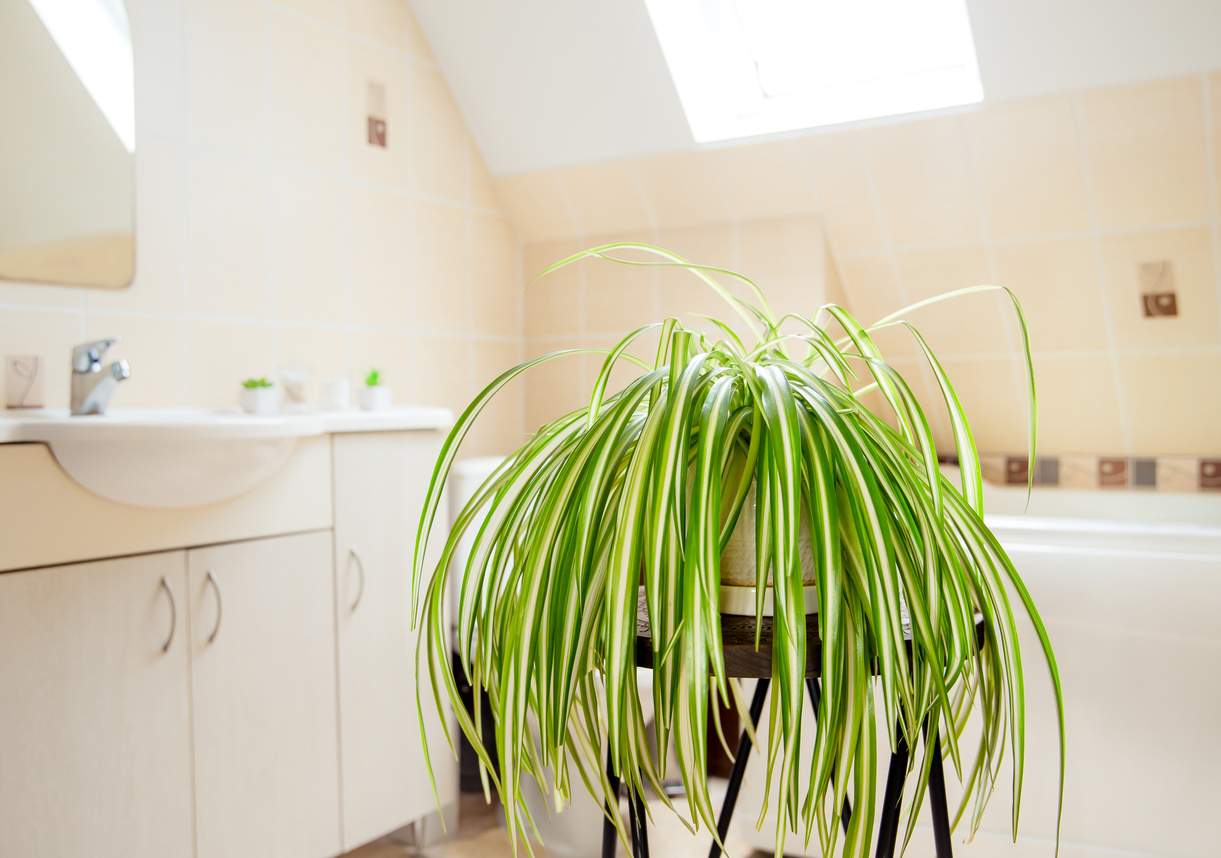
Indoor spider plants do best at temperatures between 65 and 75 degrees Fahrenheit, but generally will tolerate temperatures as low as 55 or as high as 80. They usually get by on average humidity too.
However, if the plant’s tips turn brown and you’ve eliminated other causes for browning, its foliage could be suffering from dry air. To fix browning due to dry air, try one or more of the following:
- Place the plant in a humidity tray
- Mist it daily
- Group it with other plants
- Keep it in a humid room, like a bathroom
Prune Your Spider Plant
Use a pair of clean, sharp scissors or pruning shears and cut off any dead or brown leaves at their base. If your plant has any long shoots or spider plant babies, you can also cut those off close to the offshoot’s base.
Propagating Spider Plants
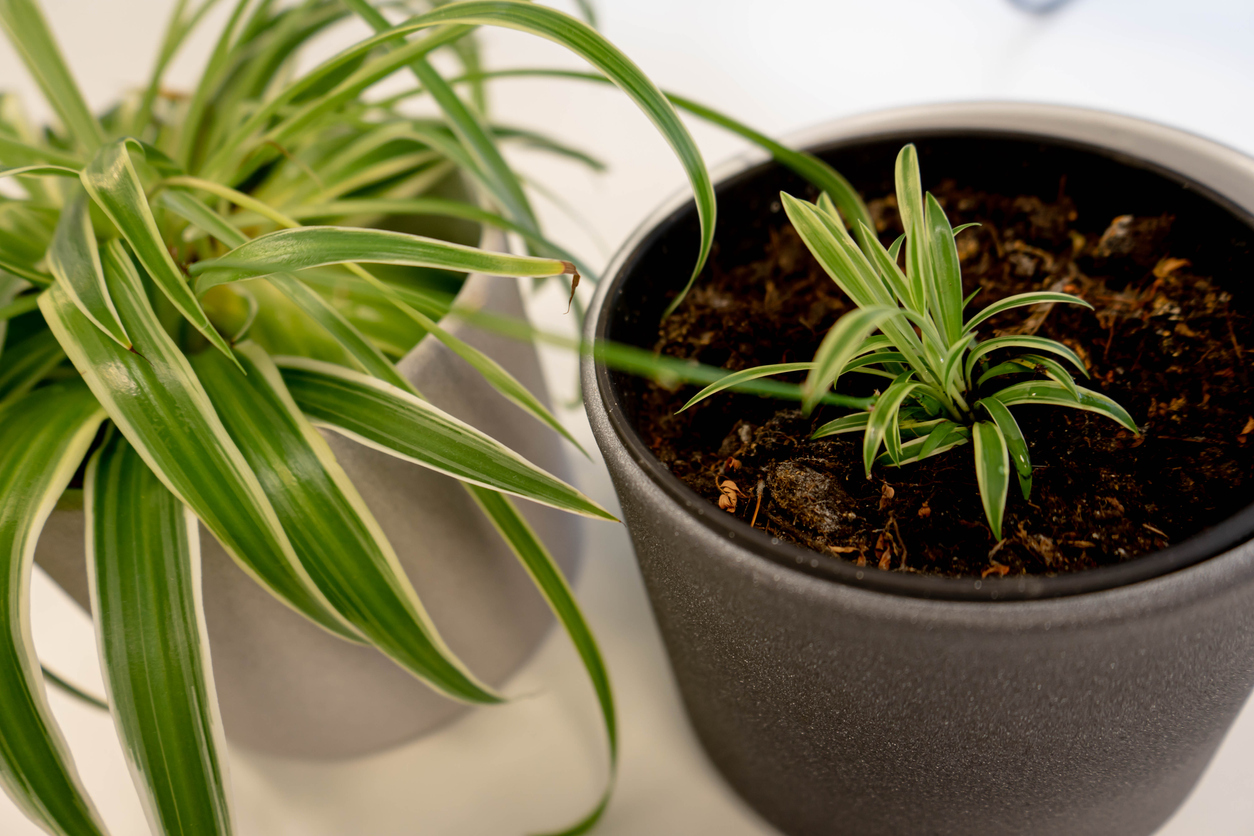
If you notice any spider plant babies, you can grow them to maturity using these tips for spider plant propagation. It’s easy to increase the number of these delightful houseplants:
- Fill a small pot with well-draining soil.
- Cut the spider plant baby off of the mother plant using clean, sharp scissors or shears.
- Use your finger to make a hole in the pot’s soil that’s deep enough to hold just the bottom portion of the cutting, then place the spider plant baby inside of it.
- Backfill the hole, making sure the soil covers the entire base (and any roots) of the spider plant.
- Place the pot in a window with indirect light, watering it every week or so to keep the soil moist.
Types of Spider Plant
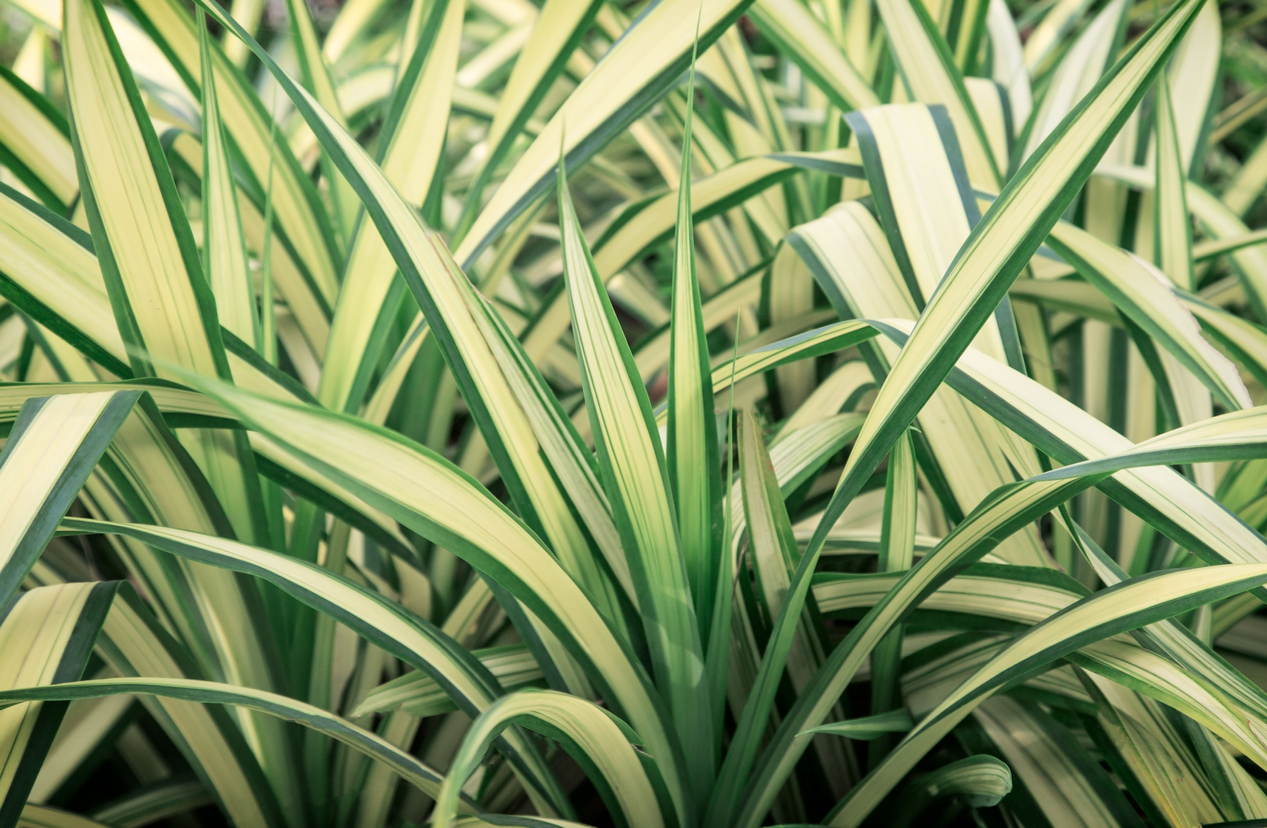
Although there are many types of spider plant, these popular houseplants share the attractive leaf type, long and slender and cascading from a central point. Some common types include:
- C. comosum ‘Variegatum’: Among the largest types, this spider plant features white-edged leaves up to 16 inches long and 1 inch wide.
- C. comosum ‘Vittatum’: Meaning ‘banded,” this spider plant type exhibits pale green leaves up to 8 inches long with a white stripe down the center of each.
- C. comosum ‘Mandaianum’: A dwarf variety with dark green leaves up to 6 inches long, Mandaianum has a yellow streak down its blades.
Potential Pests and Diseases
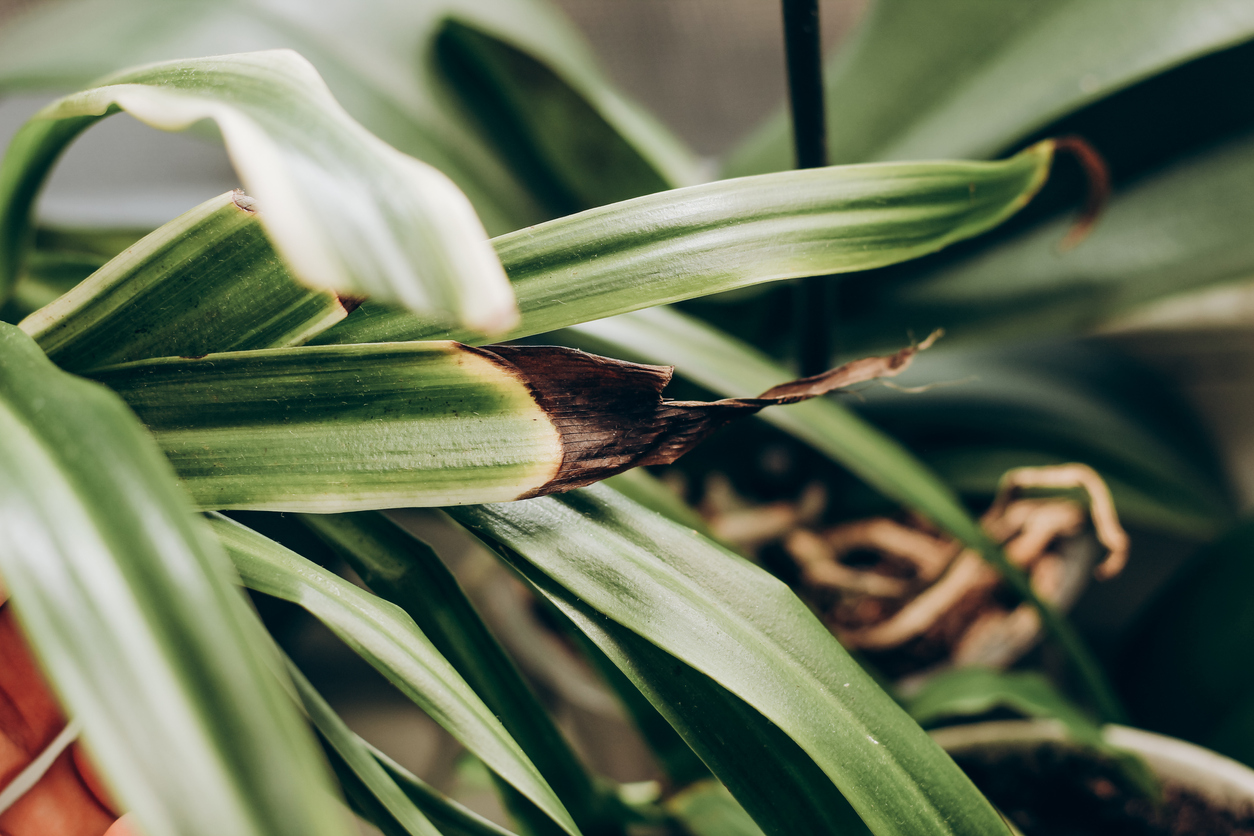
Spider plant brown tips may be caused by fluoride or boron in your water. A reddish-brown color generally indicates fluoride, while grayish-brown indicates boron. But brown tips also can be due to over-fertilization, low humidity, or dry soil.
Such stressors can also leave your spider plant vulnerable to pests such as scale insects, mealybugs, spider mites, and aphids. You can get rid of spider mites and aphids by knocking them off with a strong stream of water every few days until they all disappear. However, you may need to remove scales and mealybugs in a more tedious manner by applying rubbing alcohol with a Q-tip.
How to Pot and Repot Spider Plants
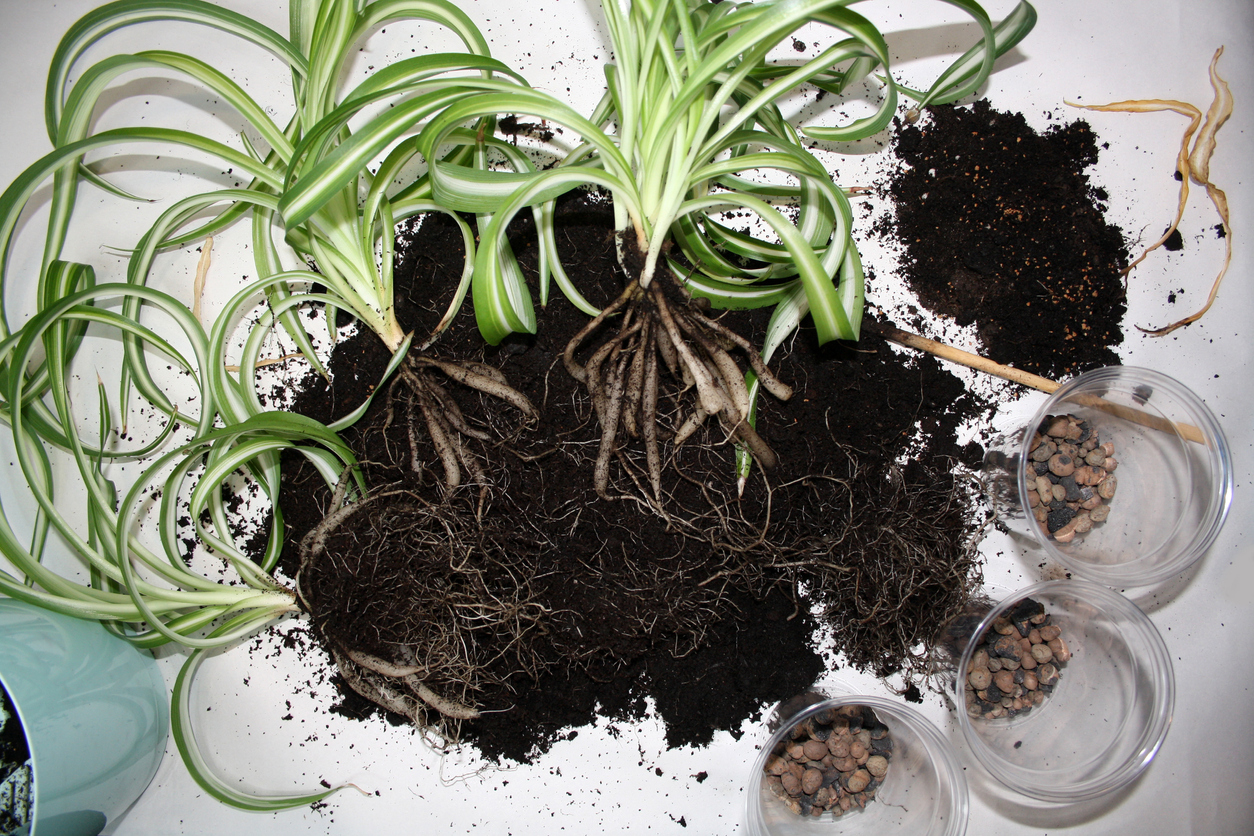
The spider plant’s growth habit is perfect for hanging pots or as a spiller in a mixed pot. Container-grown spider plants will grow best if placed in the right size pot and repotted every few years.
Potting Spider Plants
- Spider plant roots grow horizontally, so choose a pot that’s wider than it is deep (or, just make sure the pot isn’t narrow).
- Fill about ⅔ of the pot with a well-draining potting mix.
- Place the spider plant in the pot, ensuring the plant’s crown is slightly above the soil’s surface.
- Fill the rest of the pot with soil, making sure the plant’s roots are covered but the crown remains on top of the soil, then press down gently to remove air pockets.
- Thoroughly water the plant to help the soil settle in.
Repotting Spider Plants
- If your spider plant hasn’t been repotted in 2 to 3 years or you notice roots shooting out of the pot’s drainage holes, it’s time to repot it.
- Choose a pot that’s slightly larger than the existing spider plant pot.
- Water the plant to make its removal easier.
- Turn the pot sideways and gently hold the spider plant by the stems, tapping the bottom of the pot until the plant comes out. If your plant is root-bound, you might need to cut through those roots with clean scissors to remove it.
- After removing the plant, use your fingers to gently loosen the root ball.
- Add the spider plant to your new pot following the same steps outlined in the “Potting Spider Plants” section.
Safety Considerations
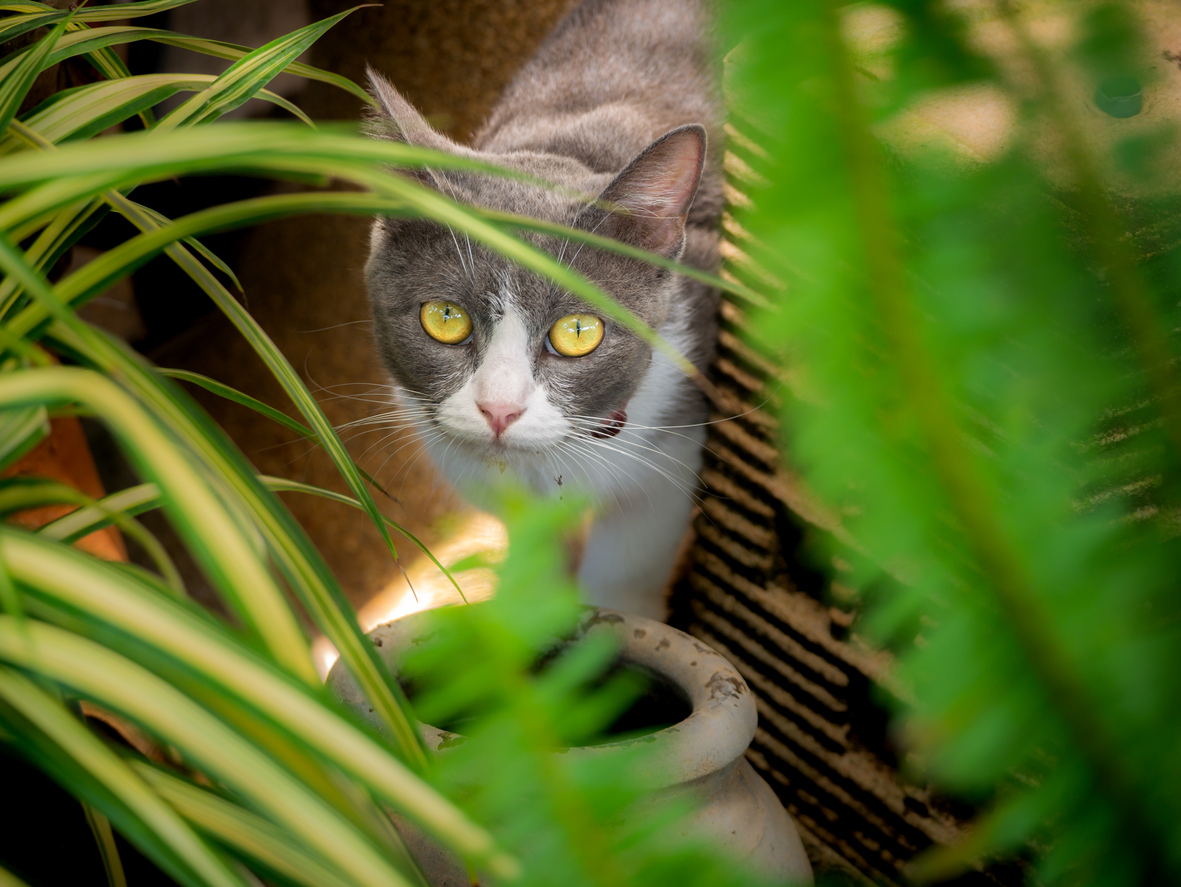
Although spider plants are nontoxic to pets and children, their dangling plantlets are often irresistible to kitties and toddlers who might want to pull on or eat them. (The fact that spider plant foliage reportedly gives cats a hallucinogenic buzz might influence that choice.) So part of spider plant indoor care involves keeping it out of reach of those who might want to play with it.
FAQs
Q. Where should you place a spider plant?
Position a spider plant in a location with bright, indirect light or near an east-facing window.
Q. Do spider plants bloom?
Spider plants typically only bloom once per year in the spring or early summer. To encourage blooms, make sure your spider plant receives sufficient light and water, and leave it in a room that’s between 65 and 75 degree Fahrenheit.
Q. Should I cut the brown tips off my spider plant?
Yes, you can trim brown tips from your spider plant’s leaves. But unless you address the issues causing them (see “Potential Pests and Diseases” above), those brown tips will return.
Q. How high can a spider plant grow?
The largest cultivars may reach 2 feet in height, but dwarf types will remain much smaller.
Q. Can I leave my spider plant outside during the winter?
Spider plants growing in the ground can survive winters in zones 9 through 11, though they may die back to their rhizomes during the coldest months.
Looking for more beginner-friendly plants or low-maintenance houseplants? Check out our guides on caring for snake plant, jade plant, and peace lily.

